Results 1 to 10 of 257
-
05-17-2014, 08:15 AM #1
MakerFarm 8" i3v Prusa build by Printbus
Notes and observations from my i3v build are captured here. My assembly goals included seeing what I could do to improve the appearance of the completed printer. The i3v is expected to be my only 3D printer for a long time, and I want it to look good whether in use or on the shelf. Primary areas of emphasis were in gluing some of the wood components, filling the post and slot wood joints, painting, and a major effort on cable dressing and routing. Various mechanical tweaks were incorporated as I saw a need for them during the assembly. Whether these extra efforts were necessary or not is irrelevant. It's just part of how I approach things and part of the reason why I bought a kit instead of an assembled printer. I admit that I'm unusually nitpicky about things, but some of my observations and suggestions may still be of value to others.
Subassembly notes and pictures are provided in the same sequence of the MakerFarm i3v build guide. All notes here are with respect to the 8-inch i3v kit, build guide, and build videos as they were around May 2014. Note that in my case I had glued various wood components together in an initial assembly pass prior to painting. Info that follows is mostly derived from final assembly after painting.
FOLLOWUP COMMENT: Readers need to note that the bulk of the build thread is based on the 8-inch printer, and based on the 8-inch printer as it was in early 2014. While some concepts will apply to newer 8-inch kits and the newer, larger printers, MakerFarm has been making changes to the printer designs. All mods and improvements discussed in this thread should be assessed for suitability on the updated kits before they are attempted.
The thread includes a lot of detail on purpose. Feel free to skip it if you're expecting a quick read.
Also note that as of April 2015, 3DPrintBoard was having problems properly displaying images and dealing with other attachments. Printbus posts in the thread have been revised to now link to images and attachments stored offsite from 3DPrintBoard.
THREAD TABLE OF CONTENTS
GENERAL OBSERVATIONS
X MOTOR SUBASSEMBLY
X IDLER SUBASSEMBLY
Y IDLER SUBASSEMBLY
Y BED SUBASSEMBLY
X CARRIAGE SUBASSEMBLY
Y MOTOR SUBASSEMBLY
FRAME, X AXIS SUBASSEMBLY, and X AXIS INSTALLATION
X AXIS ALIGNMENT
Y AXIS
LCD INTERFACE AND LCD INSTALLATION
Z MOTOR
THERMISTOR BUILD
HEAT BED INSTALLATION
ENDSTOP INSTALLATION
EXTRUDER AND HEXAGON HOT END
POWER SUPPLY and RAMPS MOUNTING
WIRE ROUTING (Part One)
WIRE ROUTING (Part Two)
MOTOR TESTING and ENDSTOP ADJUSTMENT
BED LEVELING
GARBAGE DATA ON LCD DISPLAY
HEAT BED CLIPS
WRAPUP COMMENTS ON THE INITIAL BUILD
SIX WEEK STATUS UPDATE
Y MOTOR COOLING FAN
IMPROVED KILL SWITCH
NOISE AND VIBRATION REDUCTIONS
MINOR FIRMWARE PERSONALIZATION
EXTRUDER REBUILD AND NEW PRINT COOLER (Part 1 of 2)
EXTRUDER REBUILD AND NEW PRINT COOLER (Part 2 of 2)
DISABLING POWER FROM USB
TWEAKS TO THE COUPLERS ON THE Z-AXIS RODS
RAMPS STEPPER MOTOR DRIVER COOLING FAN
NOV 2014 BENCHMARKS USING MAKE: 2015 TEST MODELS
RUNNING SUMMARY OF CONFIGURATION SETTINGS
DISPLAY BEZEL
REPURPOSED SPOOL MOUNT
NEW MOTORS AND MORE
POWER MODIFICATIONS
NEW APPROACH FOR THE HEXAGON HOT END SHROUD
SMOOTHIEBOARD AND OTHER UPGRADES
DECEMBER 2016 STATUS UPDATE
PRINT BED REVAMP
FEBRUARY 2019 STATUS UPDATE
RASPBERRY PI AND OCTOPRINT
Z-AXIS LEAD SCREW UPGRADE
X-CARRIAGE AND EXTRUDER REPLACEMENT
placeholderLast edited by printbus; 02-03-2019 at 04:30 PM. Reason: Added new table of contents entry
-
05-26-2014, 08:59 PM #2
General observations
UPGRADES TO WOOD FRAME COMPONENTS
Now that the i3v has been out for a while, upgrades and modifications for it are available on Thingiverse. Those about to assemble the i3v are encouraged to search Thingiverse using search terms such as MakerFarm or i3v. While it may not be possible for some to print parts until they get a printer working, it might be good to know ahead of time where later upgrades may be retrofitted.
BUILD GUIDE
The MakerFarm build guide and videos are OK, but not perfect. I printed a copy of the build manual so I had a place to capture notes as I go. I suggest those building the printer skim through all the videos before doing anything. One video cuts off at the end but the missing effort is described in a subsequent video. There are a couple of places where things are put together wrong and corrected in the next video. The printed copy is good for noting things like this. I also archived copies of the build videos.
There is one definite correction to the build guide as it was in April 2014. The page titled "Adjusting the Stepper Drivers" says you should select the DC Current mode on your multimeter. Doing so will short out the voltage points being probed here - a bad thing to do. You need to select DC Voltage mode on the multimeter, as the multimeter picture on that page does show. (NOTE: This error has been corrected this in updated versions of the build guide.)
UNPACKING AND HARDWARE NOTES
Extruder parts are conveniently packaged separately from the rest of the printer. Except for a few bolts in the extruder package, all screws in my kit were black. Washers and nuts were steel colored - not black.
Contrary to the videos, the delrin wheels now come with bearings preinstalled and each wheel wrapped in plastic. A proper shim washer is included between bearings in all of the wheels. The shim will minimize issues in how tightly the wheels are bolted on. I had purchased 1mm shims to use for this since the videos only addressed using a washer as a shim on just a couple of the wheels; oh well.
For anyone interested in the detail, the aluminum v-rails in the 8-inch i3v are 375mm long. The 5mm threaded rods are 330mm long. Motor shafts are 5mm diameter and include flats. The shaft on the LCD rotary encoder is 6mm diameter and also is flatted on the end, although the lower part of the shaft is round.
At a minimum, tools required for the 3mm cap screws and 5mm button head screws will include 2.5mm and 3mm hex drivers or allen keys, as well as 5.5mm and 12mm sockets or wrenches. Having an assortment of good hex drivers would be handy. A 3mm T-handle hex driver was later found to be very helpful for some of the M5 screw locations.
I feel the M3 x 4mm set screws included for the two motor pulleys are pretty short - they'll recess well into the gears when tightened. I purchased some 6mm long set screws off eBay.
I'm adding flat washers to many screws, especially those on the motors. I'm going to increase the length of the motor mount screws to 12mm to ensure maximum thread engagement in the motors. I also obtained larger diameter fender washers to use with the eccentric spacers.
The left sidewall of the frame comes predrilled with two sets of power supply mounting holes. One set of holes fits the common Mean Well type 12V 24A and 12V 30A supplies. Those wanting to mount a Mean Well or knock-off power supply to the provided holes in the left sidewall will need to obtain some M4x8 or M4x10mm screws.
The laser cut edges of the veneered panels have a glazed finish. Those wanting to paint or glue will likely want to sand the glazing for better adhesion.
My kit came with a 4GB SD card, a 1.8m/6 ft shielded USB cable, and an extra fan that could possibly be used as a print cooler. The wire packet comes with a number of extra thermistor and motor wires with header connectors already installed on one end.
INITIAL ASSEMBLY OF THE WOOD COMPONENTS
The initial round of assembly efforts were focused on getting the wood parts painted so they could thoroughly dry while I was on travel for a while. Where wood components are fastened without adjustment or obvious need for future disassembly, I glued the wood joints. This should ensure long term rigidity to the frame. Screws and other hardware like idler bearings were installed for the glue-up. I just used normal wood glue.
I wasn't overly impressed with the fit of the belt mount brackets on the Y-bed, and added some shim stock to ensure a better fit. Clamps were used to ensure perpendicular joints here and on the front Y-idler bracket came out 90 degrees. I should also point out that the two pairs of stubs on the cross piece for the Y-bed mount aren't the same exact dimensions. I oriented the cross piece to provide the squarest overall fit with the holes of the Y-bed.

The post and slot joints were filled with Minwax epoxy wood filler and sanded so they won't be visible after painting.

After the glue had set, screws and other temporarily installed hardware were removed prior to painting. The LCD assembly and spool holder were not glued before painting. I opted for a satin dark gray color (RustOleum Granite) spray paint to complement the décor of my combination home office/workshop and as what seems like a good mix between the aluminum and black components on the printer. The expandable cable sleeving I'll be using throughout will also black.
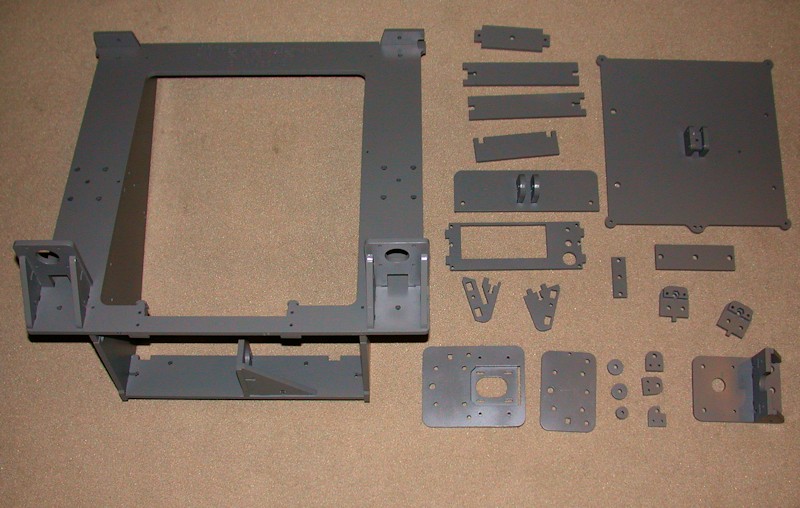
FOLLOWUP COMMENT #1: During final assembly, I opted to add some LED strip lighting to the underside of the X carriage. If I had known that when I was painting, I may have painted the underside white rather than gray just because white would have reflected light better than gray.
FOLLOWUP COMMENT #2: If I could do it over again, I would not have glued up the x-carriage before painting. Keeping the parts separable may be helpful if future mods include replacements to bracket components, for example.
GENERAL ASSEMBLY COMMENTS
In fit checks and initial assembly efforts, I've noticed many of the M5x12mm bolts fastening things to the v-rails are cutting rings into the bottom of the extrusion channels when the bolts are tightened. The screws should be pulling the nut plates against the top edge of the extrusion without bottoming out in the channels. The fact that they're starting to engage with the bottom of the extrusion channel means the bolts may not be properly gripping whatever is being clamped to the v-rail. Screws tend to have a raised rim on the end from the manufacturing process, and these bolts are no different. While the bolts may work OK as is with the extrusion engagement, I opted to file away at least the raised rim on the bolt ends.
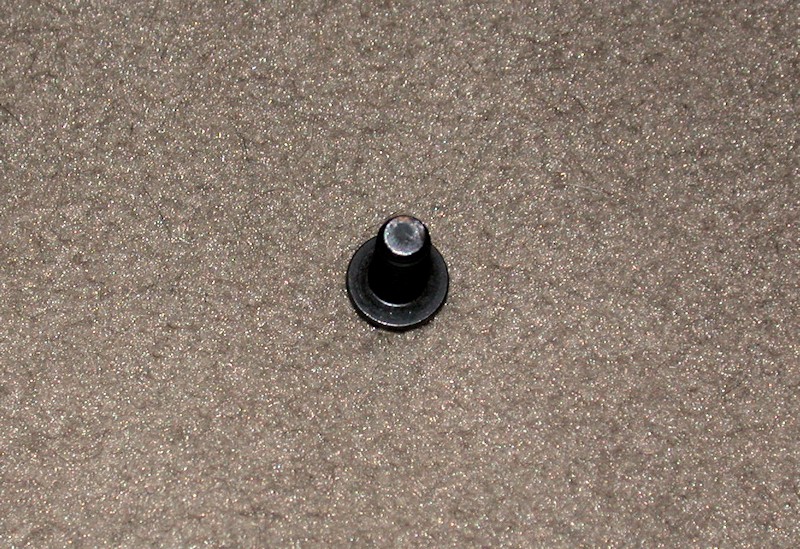
FOLLOWUP COMMENT: There are several places where I mention shortening bolts with a file. In ALL cases this was done with the bolt removed from the printer so that filings were kept away from bearings, the aluminum rails, electronics, etc. I also had been planning to use threadlocker on all metal-to-metal fasteners where nyloc nuts aren't or can't be used. I'm having to rethink this since a lot of the hardware is temporarily installed and readjusted later in the assembly.Last edited by printbus; 05-31-2015 at 08:04 AM. Reason: migrated to offsite image storage due to 3DPrintBoard issues
-
05-30-2014, 12:14 AM #3
X Motor subassembly
X MOTOR
I added a fender washer to the nut on the bolt for the eccentric spacer. This will help keep the nut from tearing into the wood as the eccentric spacer is adjusted.
When attaching the v-rail wheels, I suggest temporarily inserting the bracket that holds the nut for the Z-axis threaded rod. This allows you to fit check the bracket; I found it necessary to orient the nut on the adjacent wheel bolt so a flat is up against the bracket. In my case, the two brackets were sized slightly different - likely just the tolerance on the laser cut. I picked the preassembled bracket that fit the best on the X Motor subassembly and then kept it with the X Motor until permanently installed.

For appearance, I experimented with reversing the wheel bolts so the bolt heads faced the front of the printer. This is troublesome in that there isn't enough clearance for the lock nut and any bolt excess on the rear of the plate. The standard nuts I experimented with would occasionally rub on the frame. For this bolt reversal to have worked, thinner jam nuts would have to be used and the bolt would have to be shortened so the threaded end is flush with the jam nut. I decided this wasn't worth the added effort.Last edited by printbus; 05-02-2015 at 11:36 PM. Reason: migrated to offsite image storage due to 3DPrintBoard issues
-
05-30-2014, 12:24 AM #4
X Idler subassembly
X IDLER SUBASSEMBLY
As on the X Motor subassembly, I added an M5 fender washer to the bolt for the eccentric spacer, and the bracket for the nut on the Z-axis threaded rod was temporarily installed for fit check and nut alignment. The bracket used in the fit check was kept with the X Idler so it would be the one permanently installed later.
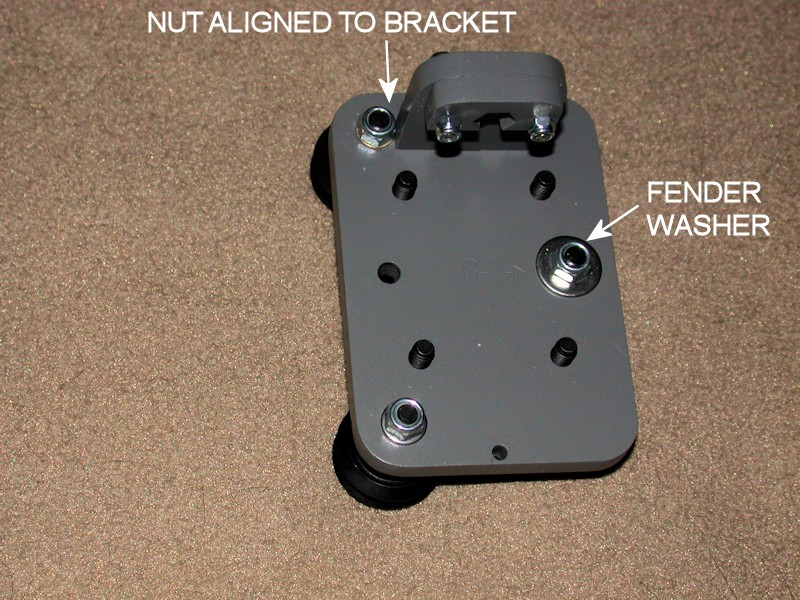
FOLLOWUP COMMENT: I later added a small block of scrap wood to the bottom of the X Idler to improve the mating surface with the Z endstop switch. See the later ENDSTOP INSTALLATION post for a picture.
FOLLOWUP COMMENT #2: Even later I opted to change the Z endstop switch approach, so the small block of wood eventually became unnecessary.
FOLLOWUP COMMENT #3: During final adjustments, how the belt rides on the idler bearings can be adjusted by moving the idler bearing bracket slightly on the v-rail. I later incorporated a custom belt guide design. I installed it after using the printer a while simply because it's a better design approach that won't allow the belt to rub on the wood brackets. Although the thingi is intended for the i3v Y idler, it works for the X-idler too.Last edited by printbus; 05-02-2015 at 11:38 PM. Reason: migrated to offsite image storage due to 3DPrintBoard issues
-
05-30-2014, 12:51 AM #5
Y Idler subassembly
Y IDLER SUBASSEMBLY
When I glued the wood parts together, I made sure the brackets for the idler pulley were perpendicular to the forward plate. This led to room for three washers with the bearings instead of the two used in the build video. I initially put the extra washer between the bearings, but when the Y axis components were assembled I noticed the idler brackets here are offset a bit from the bracket on the Y bed. I moved the extra washer to the side opposite of where the belt will ride.
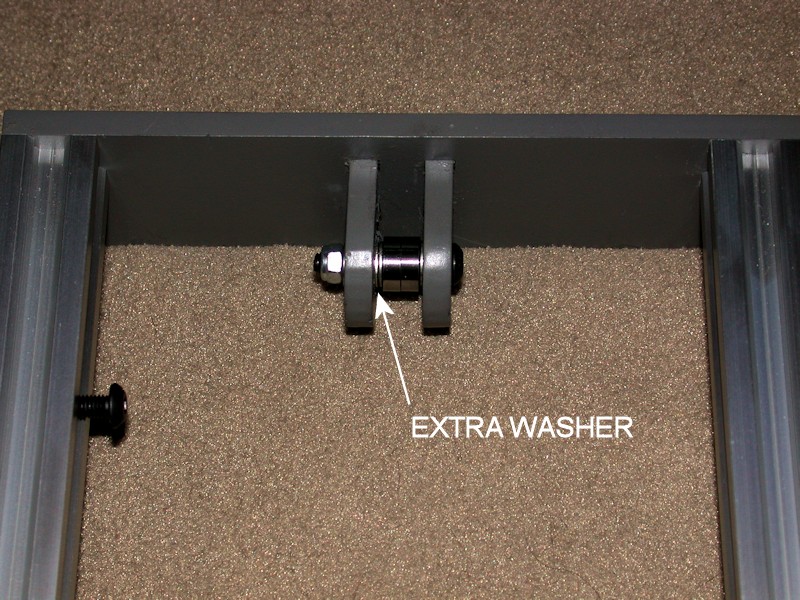
Gluing the brackets in place and filling the joints before painting leads to a clean look on the front of the printer. A disadvantage of this, however, is that I left no way here to adjust how the belt rides on the bearings. Normally, adjustment of the bolts holding the brackets in place could likely be used to slightly change the angle of the bolt with respect to the belt. The belt will tend to ride towards one side or the other if the bolt isn't exactly 90 degrees from the belt.

FOLLOWUP COMMENT: After using the printer a while, I haven't been having problems with the belt rubbing on the wood brackets, but there's a custom belt guide design now available on Thingiverse that is worth considering. I installed it after using the printer a while simply because it's a better design approach.
FOLLOWUP COMMENT #2: An improved version of the belt guide pulley is available at http://www.thingiverse.com/thing:790138Last edited by printbus; 05-31-2015 at 08:12 AM. Reason: Added mention of improved belt guide pulley
-
05-30-2014, 01:01 AM #6
Y Bed subassembly
Y BED SUBASSEMBLY
As with other subassemblies, M5 fender washers were used with the eccentric spacers.
To minimize protrusions on the top side of the Y bed, here I did reverse the wheel mounting bolts so the bolt button heads are on the top side of the bed.
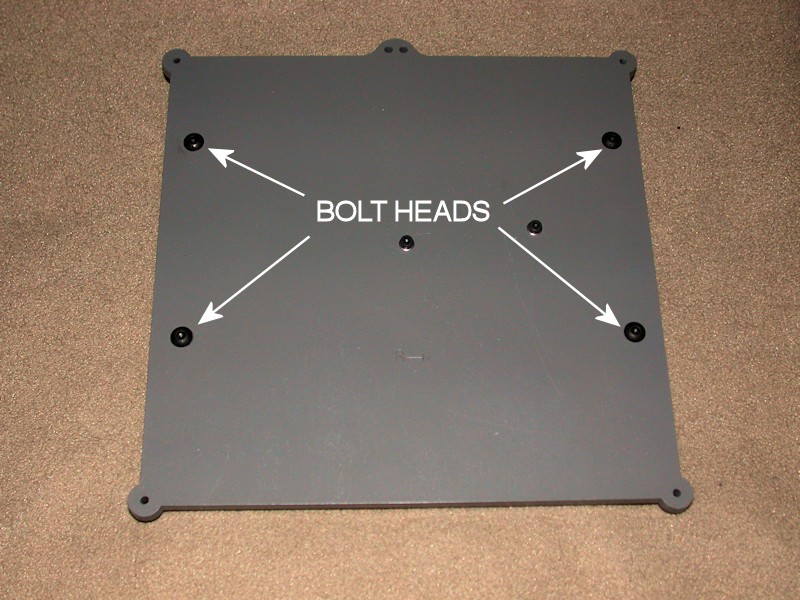
There isn't enough frame clearance on the bottom side for the standard length bolts and the lock nuts, so I used standard nuts and shortened the bolts by about 1.5mm so the threaded end of the bolts are flush with the nuts. Threadlocker was used here in order to keep the nuts tight.
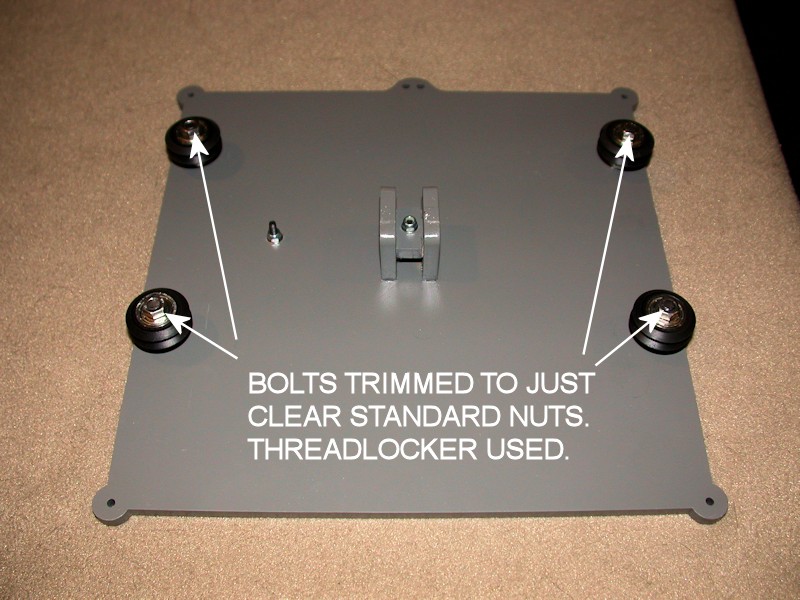
FOLLOWUP COMMENT: I later changed out the M3 bolt that is used with the Y end stop switch for a longer aluminum standoff. See the later ENDSTOP INSTALLATION post for info and a picture.Last edited by printbus; 05-02-2015 at 11:45 PM. Reason: migrated to offsite image storage due to 3DPrintBoard issues
-
05-30-2014, 01:23 AM #7
X Carriage Subassembly
X CARRIAGE SUBASSEMBLY
Yeah, another eccentric spacer where I added a fender washer.
Being nitpicky about things, I didn't like how the belt is attached in the build videos. I don't like using multiple nuts on a bolt (can be hard to adjust and keep tight), and I wasn't sure wrapping the belt around an M3 bolt is consistent with the belt minimum bend radius spec. I admit I didn't try to search out what the minimum bend radius is, but I opted to wrap the belt around a 1/4-inch long aluminum spacer. The 1/4-inch length is close to the width of the belt. The stackup of hardware on the bolts is a 1/8-inch spacer, an M3 flat washer, the 1/4-inch spacer, another M3 washer, and a nut. I didn't have enough bolt length for a lock nut, so a standard nut with threadlocker was used instead. For appearance, I reversed the belt mounting bolts so the heads are at the front side of the carriage.
The build guide just says to use a 30 inch length of belt, with determination of the proper overall loop-to-loop length left to the user. I changed mine a few times, and likely ended up with about 28-1/4 inches between the center holes of the spacers on both ends. I doubled up the zip ties partially for appearance but also to help ensure several belt teeth are engaged on each end.
The X carriage is designed so that the heads of the bolts attaching the extruder bracket to the carriage clear the front facing channel of the lower X-axis rail. During my printer final assembly, I was seeing the bolt heads rub against the rail channel. This interference may have went away with final adjustments, but as a precaution I replaced those two bolts with button head types that have a lower profile head.

FOLLOWUP COMMENT #1: After mounting the extruder to the X carriage, I noticed the bolts mounting the top wheels were rubbing against the large gear on the extruder. This may have been driven by having to increase the number of spacer washers inside the large gear so the gear would clear the heads of the motor mounting bolts (for the added strength, I used longer bolts with heads and large washers that rest on the far side of the motor mount rather than the typical recessed bolt heads). I ended up shortening those bolts with a file by about 2.5mm so that the ends of the bolts are flush with the locknuts when tightened. See the later EXTRUDER AND HEXAGON HOT END post for a picture showing the interference.
FOLLOWUP COMMENT #2: Limit how much excess belt you have on the side that loops through the X idler, or the excess belt may get drawn into the idler bearings or pulley. Keep that side short, and put the excess belt on the other end.
FOLLOWUP COMMENT #3: During installation of the extruder onto the X carriage, the hot end tip couldn't get any closer than about 6mm inside the 200mm square marking on the heat bed. Part of the solution was to elongate the extruder mounting holes and the large U channel in the bottom of the X carriage to the right so that the extruder can be mounted closer to the X idler side. Next time, I'd elongate them as part of the initial X carriage build.
FOLLOWUP COMMENT #4: There are a few options on Thingiverse for alternate methods of attaching the belt to the x-carriage. My custom belt mount is available at http://www.thingiverse.com/thing:790207Last edited by printbus; 05-31-2015 at 08:16 AM. Reason: Added mention of alternate belt attachment
-
05-30-2014, 01:31 AM #8
Y Motor subassembly
Y MOTOR SUBASSEMBLY
I oriented the motor so that the wires come out of the motor towards the rear. Since I plan to really work cable routing appearance, this should provide the cleanest routing option.
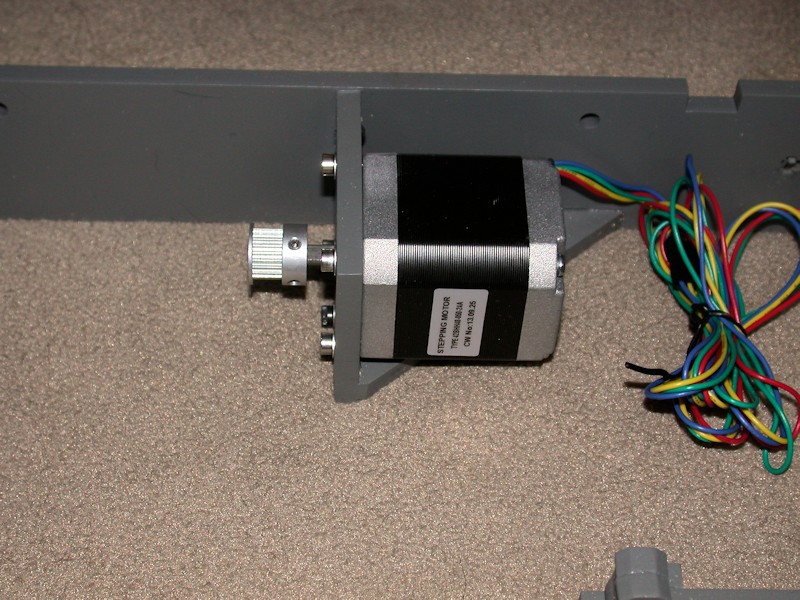
I didn't like the way the set screws provided in the kit ended up being recessed in the pulley threads, so I obtained some M3 x 6mm set screws to use instead. Note that the pulley isn't in the final position on the motor shaft in this picture. M3 flat washers were added to the motor mounting bolts. This takes away from thread engagement in the motor, so I swapped out the 10mm long bolts for 12mm long ones. These are close to bottoming out in the motors, so they're providing as much thread engagement as possible.
FOLLOWUP COMMENT: The natural way to install the motor is to set the motor in the bracket and bolt it in place. I believe one of the sources of vibration I had in the i3v is the bottom side of the Y-motor rattling on the bottom of the motor bracket during certain print moves. I later added some thin silicone sheet material there that helped. Even adding a few layers of high temperature electrical tape might help provide some cushion. The material needs to be very thin or the motor bolt holes won't line up with the holes in the bracket.
FOLLOWUP COMMENT #2: When I later replaced the original CW motors with Kysan motors, the 12 mm screws were too long and I reverted back to 10mm. When the motors were replaced, I added a layer of fiberglass tape to the mounting face of each motor, mainly to keep the motor faces from sticking to the painted surfaces but also to provide at least some vibration isolation.Last edited by printbus; 05-02-2015 at 11:51 PM. Reason: migrated to offsite image storage due to 3DPrintBoard issues
-
05-30-2014, 01:51 AM #9
Frame and X-axis
FRAME, X-AXIS SUBASSEMBLY, and X-AXIS INSTALLATION
Here I deviate from the sequence of the build guide a bit, deferring the Y Axis subassembly until after the X Axis installation. Since I glued the top plate of the frame on prior to painting, my installation of the vertical rails on the frame has to wait until the completed X axis assembly is ready to install onto the printer.
Be sure to start the X axis installation with the eccentric spacers on the X motor and X idler subassemblies set to provide maximum spacing between wheel rows (i.e., the "loose" orientation). In the build videos, the X axis assembly is slid onto the open top ends of the rails. In my case, I slipped the rails up through the bottom of the Z motor mounts, engaging the T-nuts and wheels in the completed X axis in the process. An advantage of this approach is that the vertical rails can then be pulled flush up to the top frame plate with the bolts used on the extrusion ends.
As with the Y motor, M3 flat washers were added to the M3x12mm bolts used on the X motor mount. M3 x 6mm set screws used on the motor gear instead of the shorter ones included in the kit. Thinking forward to how I plan to do cable and wire routing, I mounted the X motor so that the wires leave the motor on the bottom.
(see the next post for picture)Last edited by printbus; 08-10-2014 at 11:29 PM.
-
05-30-2014, 02:37 AM #10
X Axis alignment
X AXIS ALIGNMENT
While parts of it are, this overall procedure isn't in the build guide. After installation of the X-axis, it occurred to me it would be easy for the X axis to be out of alignment when all the associated hardware was tightened. While manipulating the Z-axis threaded rods can later provide some adjustment to this, I wanted to ensure things were aligned fairly well to start with. Here's what I came up with for an alignment procedure. This sounds complicated, but it really isn't when you're going through the process on the printer.
- Loosen the four bolts at the rear of the X motor and X idler. Following the earlier post, the eccentric spacers for the X motor and X idler should already be in the "loose" position. Now also make sure the eccentric spacer on the X carriage is also in the loose position.
- Verify that the distance between the upright aluminum rails is the same at the top and bottom of the rails. My 6-inch calipers couldn't measure this, but they could measure the gap left after starting with a short metal bar used as a filler. Mine were off a bit and I loosened the bolts on the rails, manipulated them some with a bar clamp, and then retightened the hardware.
- Adjust the eccentric spacer on the X motor (left side) so that all three wheels on the X motor grab the rails. The X motor plate should have little or no play when it is rotated back and forth.
- Now repeat this with the eccentric spacer on the X idler (right side).
- Add a clamp to the left-side rail and rest the X motor assembly on it so that the four rear bolts on the X motor are accessible through the adjustment holes provided in the frame.
- Now hold a long straight edge (I used an 18-inch metal ruler) on the top edge of the X motor plate so that the straight edge extends to the X idler. Position the X idler so that the top edge of the X idler is also flush with the straight edge. Add a clamp to the right side rail for the X idler to rest on, keeping the X idler lined up with the straight edge.
- Now position the two horizontal rails the way you want them. For appearance, at least line up the ends of the two rails. The rails are a bit short; I positioned mine so there is an equal amount of T-nut exposed on both ends. Then tighten the four rear bolts on both the X motor and X idler. Recheck with straight edge and readjust as necessary. It took me a few tries to get this right, since tightening the hardware will tend to torque the X idler upwards. I ended up putting a bit of downward pressure on the X idler while I was tightening hardware.
- Install and/or tighten the brackets that hold the nuts for the Z axis threaded rods, making sure the X motor and X idler stay resting on the clamps. The nuts and/or threaded rods should not be in place yet.
- With the X carriage at the center of the horizontal rails, adjust the eccentric spacer on the X carriage so that all three wheels on the carriage engage the rails and the X carriage has minimal or no play when it is manipulated. Verify smooth operation of the X carriage across the length of the extrusions. If there are issues in getting a consistent feel (tight on one side, loose on the other, etc.), check for inconsistent spacing between the horizontal rails. Start over at step 1, using a clamp to slightly pull the rails together on the "loose" end.
- Install and/or tighten the X idler pulley bracket so it is vertical. Being exactly vertical isn't critical but why bolt it in place crooked? Watch for any interference with the Z nut bracket on the X idler subassembly. FOLLOWUP EDIT: I later trimmed off the corner edge of the pulley bracket so it doesn't catch on the Z nut bracket.
- Position the gear on the X motor so that the forward edge of the belt is at the forward edge of the horizontal rails. Adjust the belt tension by positioning the X motor in the X motor bracket. I positioned mine to take out any visible sag in the belt and then pulled it just a bit tighter. Tighten the motor mounting screws.
- Tweak how the belt rides on the X idler bearings by adjusting the idler pulley bracket slightly to the left or right. The rear end of the pulley bolt is fixed in the X idler. Moving the pulley bracket to the right (i.e., forward end of the bolt) will cause the belt to move to the rear of the bearings. Moving the bracket to the left will cause the belt to ride forward. Readjust the belt tension if required.
- Remove the clamps from the rails. Verify smooth and consistent Z axis travel. Recheck eccentric spacer settings on the X motor and X idler, and recheck for consistent spacing between the upright rails as required.
Note: Part of what we are hoping for here is perfect parallel alignment between the X carriage and the Y bed without the heater installed. I validated the above straight edge approach using a digital level (RC Logger pitch gauge from my RC helicopter hobby). It shows the difference between the Y bed and the X carriage rails is now within 0.1 or 0.2 degrees.
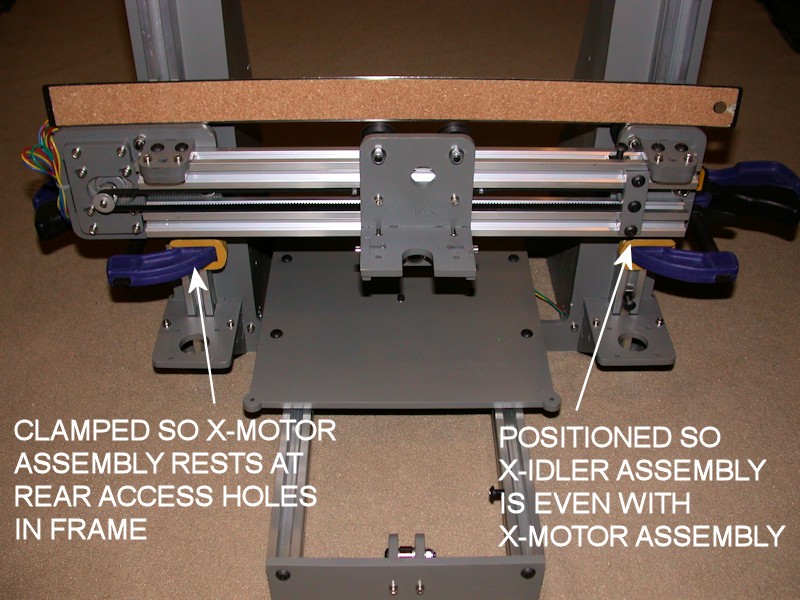
FOLLOWUP COMMENT: When the four bolts are tightened on the X motor mount and the X idler, you're defining the "natural" position of the idler with respect to the motor. Straightening this out later using the Z threaded rods will add a torque or torsion into the X carriage. It seems to me that if the torsion is high enough, it could help cause the Z motors to skip a step or double step. This is why I wanted to square up the x-carriage before the hardware is tightened.Last edited by printbus; 05-02-2015 at 11:53 PM. Reason: migrated to offsite image storage due to 3DPrintBoard issues





 Reply With Quote
Reply With Quote





Ender 3v2 poor printing quality
10-28-2024, 09:08 AM in Tips, Tricks and Tech Help